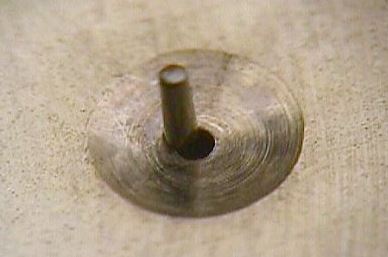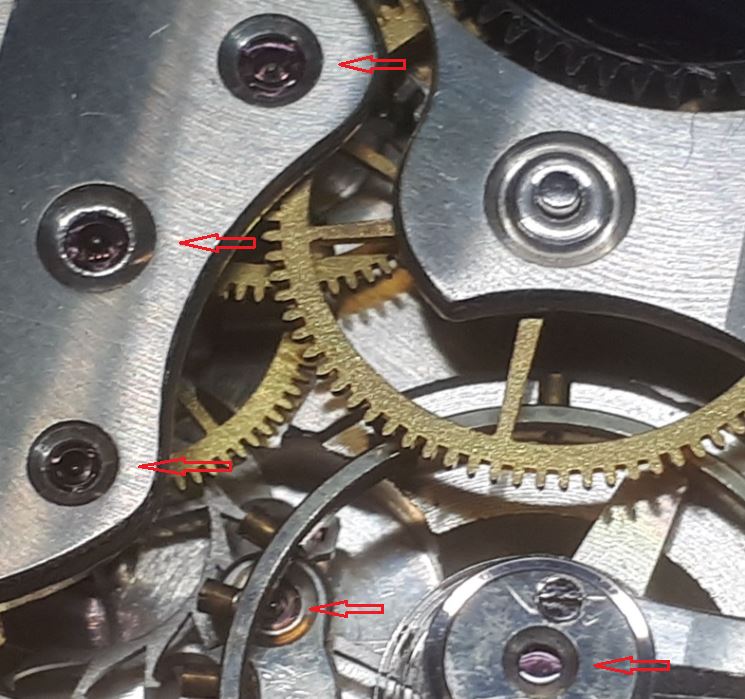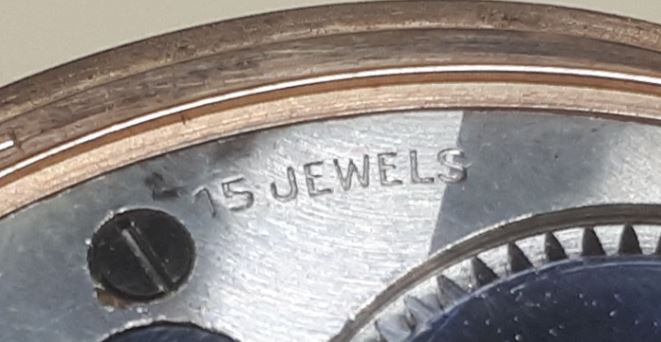Last updated on June 26, 2024
If you are new to antique watch collecting, you may not know what types of watches to look for and which would be best to avoid. In this post, we will explain why it is best to avoid buying antique pocket watches with low jewel counts. In many cases, the cost of repairing 7 jewel movements can exceed the value of the watch. Obviously, if this was an inherited timepiece the sentimental value could far exceed the cost of repair. I do have 7-jewel watches in my collection, but my focus moving forward is on fully-jewelled watches.
Jewels are hard minerals added to the movement of the watch to prevent wear at pivot and impact points. They provide a very smooth, hard surface at various points within the movement in order to reduce friction and increase running efficiency. Generally, the jewel count is a direct indicator of overall quality. Jewel bearings have been used in watches since the early 18th century. Originally natural jewels were used, such as diamond, sapphire, ruby, and garnet. In 1902, a process to make synthetic sapphire and ruby was developed by Auguste Verneuil. This made jewelled bearings much cheaper.
What do the jewel counts mean?
Below we can see the typical jewel count configurations for 7, 11 and 15-jewel movements. 7-jewel watches were budget options in their day. They weren’t designed to keep excellent time, so they usually lack features that make adjusting easy. In addition, the budget quality of 7-jewel watches made people less likely to appreciate and care for them. Valuable watches get better treatment, more frequent repair and service and cleaner storage. A 15-jewel movement is considered to be fully jewelled and is considered to be the minimum benchmark for quality watches.
7 jewels
Nearly all antique pocket watch movements will contain at least 7 jewels, located within the balance assembly and escapement:
- One pair (2) balance staff hole jewels (upper/lower)
- One Pair of balance staff cap jewels (upper/lower)
- 1 Impulse/roller jewel
- One pair of pallet jewels (right/left)
7-Jewel movements can be easily identified by the lack of hole jewels at the train bearings on the top plate. Instead of jewels, the bearings are metal bushings. 7-Jewel movements usually are not marked with the jewel count.
11 jewels
In addition to the 7-jewels located within the balance assembly and escapement, 11-jewel watches contain one of the two following characteristics:
- One pair (2) of pallet fork hole jewels (upper/lower) and one pair of escape wheel hole jewels (upper/lower).
- Or 4 upper plate hole jewels for the pallet fork, escape wheel, 3rd wheel, and 4th wheel (without paired hole jewels on the bottom plate).
In some cases, manufacturers jewelled the top plate only. If the movement is not marked with a jewel count, removal of the dial is usually required to determine the accurate count. In this case, an 11-jewel movement can look as if it is fully jewelled. 11-Jewel movements are rarely marked with the jewel count.
15 Jewels
In addition to the 7 jewels located within the balance assembly and escapement, 15-jewel watches contain:
One pair of pallet fork hole jewels (upper/lower)
One pair of escape wheel hole jewels (upper/lower)
One pair 3rd wheel hole jewels (upper/lower)
One pair 4th wheel hole jewels (upper/lower)
15-Jewel movements are occasionally marked with the jewel count.
Why 7-jewel watches can be an issue
The gear train on an antique pocket watch operates under a lot of tension from the mainspring. As the watch runs, the gears turn at various speeds and the steel axle of the gear gradually wears away at the side of the hole that it rests in. This can be exacerbated if the movement is insufficiently lubricated or if it contains dust or grit. If the lubrication and dust combine it can create an abrasive paste that will worsen the effect.
The steel wheel pivots will eventually enlarge the hole in the brass plate just like a tiny file. The enlarged hole will tend to be oval in shape because the pivot is being pushed by spring tension in a fixed direction. Once the hole becomes oval, the arbor (axle) of the wheel begins to wander off vertically. This impairs the wheel’s ability to inter-mesh correctly with the other gears. When this occurs, friction can increase and power transfer from the mainspring to the escapement becomes less efficient. The gear-train is no longer able to function correctly and the watch loses accuracy. In severe cases, the gear train will bind and the watch will stop.
The problem of enlarged plate holes does not occur in watches with higher jewel counts. This is because these watches use jewelled bearings on most or all of the gears.
Enlarged plate holes
The photograph below shows an enlarged 4th wheel pivot hole. The hole is double in size to what it should be and is oval in shape, instead of circular. The only way to fix the problem is to correct each of the enlarged holes in the plate. This could be accomplished by drilling out the hole to a larger size and fitting a small brass bushing (bouchon). The bushing would then be drilled, making sure it’s exactly the right size and in exactly the right position so that the wheel sits and meshes correctly. It’s a job that requires precise skill and the right tools. It is a time-consuming and costly process, which may need to be repeated if the watch is used regularly. In most cases, the value of a 7-jewel watch does not warrant this sort of repair investment.

Another potential solution would be to cut out the enlarged holes in the plate and install jewelled bearings at each of these locations instead of brass bushings. This is essentially upgrading the watch to a higher jewel count. However, it’s not a very practical approach for most 7-jewel watches.
Summary
In summary, 7-jewel movements can be problematic and tend to be prohibitively expensive to repair because of their built-in limitations. So, if you’re a collector of antique watches, your money is probably better invested in fully-jewelled watches of 15-jewels or more. If you are the owner of an inherited 7-jewel watch, treasure it for its sentimental value and remember that wear and tear will only occur if the watch is used on a daily basis.
Related content
A beginner’s guide to antique pocket watches.
A list of additional posts regarding antique watches can be found on the Guides page.



I prefer dollar watches, I get the more expensive pocket watches if they are being sold cheaply by someone who doesn’t know what they are worth, I bought a 7 jewel unadjusted Elgin pocket watch from 1925, it runs well for 97 yrs old, just needed dirt blown out of it & a little shake.
Hi Adam, there is nothing wrong with a 7 pocket jewel watch. I have owned several and they were accurate timepieces. They are still a marvel of engineering. It is only if the watch is going to be used every day that, over the years you will note, the effects of wear and tear. Thanks for commenting. Jason
I recently acquired a 17j Elgin durapower wristwatch, according to the serial number it was only made for 1 year (50-51) is it ok if I wind it before I go to bed & when I get up in the morning
Hi Adam, I tend to wind my mechanical watches once per day, usually in the morning. However, there should be no problem winding them as you suggest. In theory, you should be turning the crown the same number of times regardless of it being once or twice a day that you wind the watch. If you are doing it to maintain accuracy, it might mean the watch requires a service or a new mainspring. Thanks for commenting, Jason.